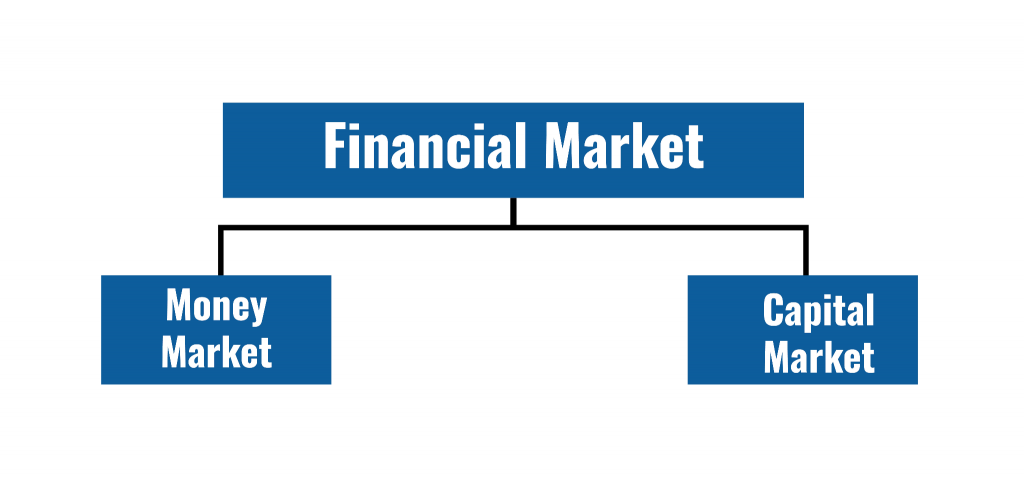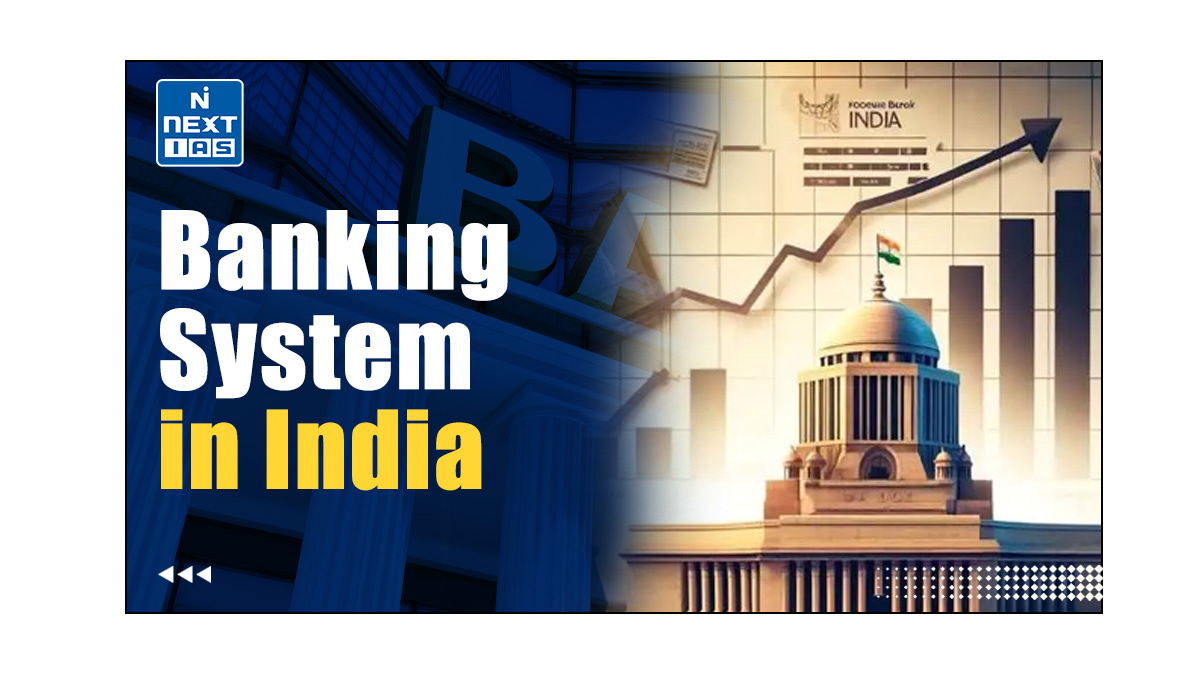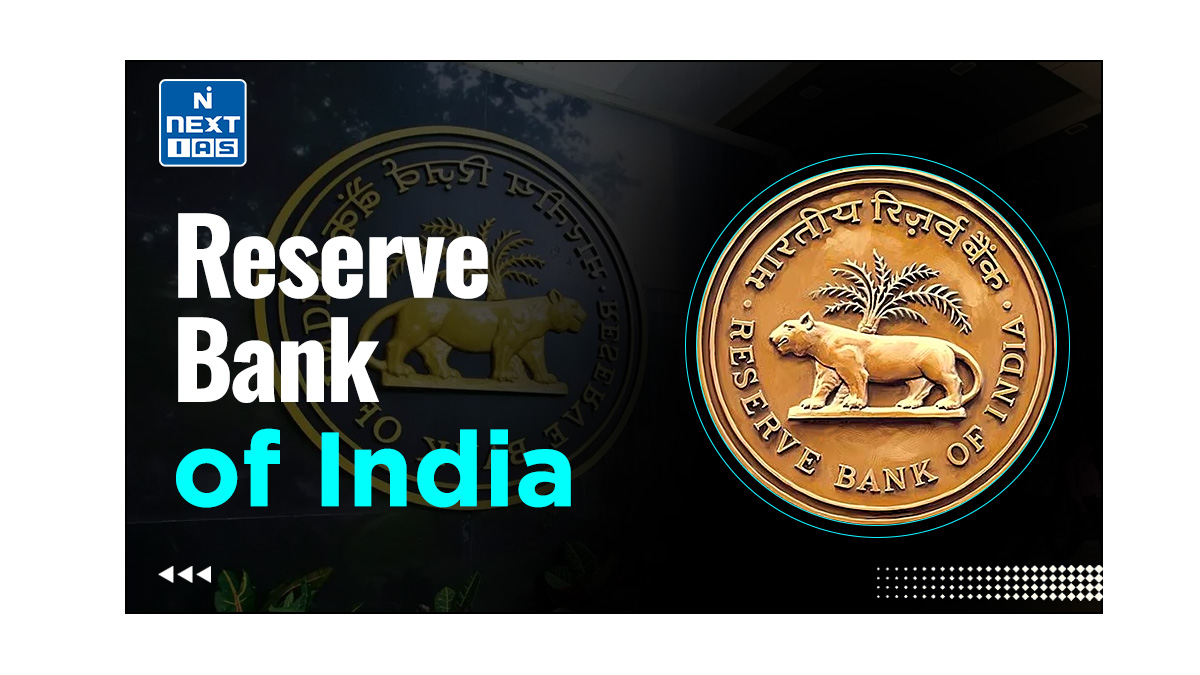
The Financial Market is the cornerstone of the nation’s economic framework. By channeling funds from investors to borrowers, it facilitates investment and hence plays a crucial role in the country’s economic development. Understanding its structure and functions is essential for developing a grasp of the Indian Financial System. This article of NEXT IAS aims to study in detail the Financial Market, including its meaning, classification, roles, and other related concepts.

What is Financial Market?
- Financial Market is a broad term, referring to any center or arrangement where buyers and sellers participate in the trade of financial claims such as equities, bonds, currencies, and derivatives.
- Its primary role is to efficiently transfer funds from those who have excess capital i.e. investors to those who are seeking capital i.e. borrowers.
- Financial Markets are typically characterized by having transparent pricing, basic regulations on trading, costs & fees, and market forces determining the prices of securities that trade.
Classification of Financial Market
Based on the maturity period of the securities traded, the Financial Market is classified into two categories.

Money Market
- Money Market refers to that part of the Financial Market in which highly liquid and short-term financial assets with a maturity of upto 1 year are traded.
- Thus, the money market caters to the short-term borrowing needs of working capital.
- Major institutions of the Money Market are – Commercial Banks, RRBs, Bill Markets, etc.
- Major instruments of the Money Market are – Call Money, Treasury Bills, Commercial Paper, Certificate of Deposit (CD), etc.
Its Structure, Major Participants, Major Instruments, and other aspects can be studied in our detailed article on the Money Market.
Capital Market
- Capital Market refers to that part of the Financial Market which provides a market for borrowing and lending of medium and long-term funds, above 1 year.
- Thus, the capital market caters to the borrowing needs for medium to long term projects and investments.
- Major institutions of the Capital Market are – Stock Exchanges, Development Financial Institutions, etc.
- Major instruments of the Capital Market are – Shares, Debentures, Bonds, Derivatives, etc.
Its Structure, Major Participants, Major Instruments, and other aspects can be found in our detailed article on the Capital Market.
Money Market Vs Capital Market – A Comparative Study
Money Market and Capital Market are two components of the Financial Market. Thus, they have some similarities. However, they serve distinct purposes and cater to different types of financial needs and participants. Thus, they have many differences as well.
A comparative study between Money Market and Capital Market is presented below in the form of similarities and differences between the two.
Similarities between Money Market and Capital Market
The money market and the capital market have certain similarities and interrelations, which can be seen as follows:
- Complementarity: The money market and the capital market are complementary to each other and are not competitive.
- Any type of financial planning must integrate the short-term and long-term programs of economic development through proper coordination between short-term and long-term funds.
- Common Institutions: Certain institutions operate in money as well as capital markets.
- For example, Commercial banks, which traditionally specialize in short-term funds, have started giving long-term loans in recent times.
- Interdependence: Money and capital markets are interdependent, and activities and policies of one market have an impact on those of the other.
- For example, the increased demand for funds in the capital market also raises the demand and interest rates in the money market.
- Similarly, the monetary policy also influences the activities of the capital market.
Differences between Money Market and Capital Market
Money Market and Capital Market differ from each other on various parameters. The same can be studied as presented in the table below.
| Basis | Money Market | Capital Market |
|---|---|---|
| Definition | Market for trading short-term financial assets with a maturity of upto 1 year. | Market for borrowing and lending of medium and long-term funds, above 1 year. |
| Maturity Period | 1 year or less. | more than 1 year. |
| Institutions Involved | Commercial Banks, Central Banks, Non-Banking Financial Institutions (NBFCs), Reserve Bank of India (RBI), etc. | Stock Exchanges, Development and Investment Institutions like insurance companies, pension funds, development banks, etc. |
| Instruments | Call money, collateral loans, acceptances, bills of exchange, etc. | Stocks, shares, debentures, bonds, and government securities. |
| Purpose | To cater to the short term credit requirements of the companies like the working capital of the industrialists. | Capital market provides fixed capital to buy land, machinery etc., and caters to the long term needs of the industrialists. |
| Risks | Since the duration of credit is much less in money markets, the degree of risk is smaller. | In the capital market, the risk is much greater in terms of degree and nature as it is a long-term investment. |
| Merit | Increases liquidity of funds in the economy. | Mobilization of savings in the economy. |
| Return | Less | Comparatively high |
| Formality of Transaction | No or little formalities are to be completed for transactions. | Well-regulated formal transactions conducted through stock exchanges. |
| Regulating authority | Closely regulated by RBI | Securities Market is closely regulated by SEBI |
Role of Financial Market
Financial markets play a crucial role in an economy. Some of their roles and functions can be seen as follows:
- Mobilization of Capital: They efficiently channel savings and investments towards businesses that need funding to grow and create jobs.
- Maintaining Liquidity: Markets provide liquidity by enabling buyers and sellers to quickly transact without causing significant price changes. This liquidity is crucial for economic stability and growth, as it allows investors to convert assets into cash swiftly.
- Risk Management: Some financial instruments like derivatives allow businesses and investors to hedge against risks, like sudden currency fluctuations.
- Price Discovery: Financial markets provide a platform where the prices of securities are determined by the forces of supply and demand. This pricing mechanism helps in allocating resources and coordinating economic activity efficiently.
- Information Aggregation and Coordination: Markets reflect information in the prices of securities, helping to coordinate economic activity. The prices at which trades occur can reflect the collective sentiment about the present and future economic conditions.
The Financial Market plays a critical role in the modern economy. They facilitate the flow of funds and financial instruments globally, helping to fuel economic growth and development. As the global and the Indian economy evolve, the roles and functions of these markets will continue to remain crucial.
GS - 3





